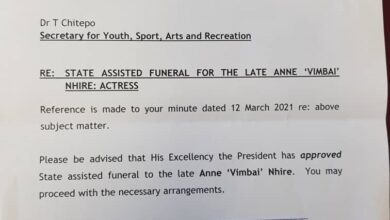
Bambanani project bearing fruits | Business Times
TENDAI BHEBHE IN BULAWAYO
A project being carried out by the Government of Zimbabwe in collaboration with the European Union (EU) in Bambanani village in the arid district of Bulilima, Matabeleland South Province to improve resilience for vulnerable households is bearing fruit as the communities are now harvesting enough to feed themselves and even for sale.
A few years ago, the government and EU launched the enhanced resilience for vulnerable households in Zimbabwe (ERVHIZ) project to address the impacts of climate change shocks on vulnerable rural households in the province.
The program aims to improve nutrition, early warning systems, and health by providing access to clean water, sanitation, and hygiene.
The project is managed by the Food and Agriculture Organisation of the United Nations and United Nations International Children ‘s Emergency Fund (UNICEF).
A member of the Bambanani Farmer Field Schools (FFS) claimed in an interview with Sibekezile Matema that the project promoted sustainable agro-ecological practices in the cultivation of dry land crops.
“This project is really assisting the communities to maintain food security at household level in order to alleviate poverty hence the name stood enhanced resilience for vulnerable household in Zimbabwe. The enhanced resilience for vulnerable households project promotes sustainable agro-ecology practices in dry land crop production through experiential learning at FFS, “she said.
The province’s agricultural economy, according to Matema, is based largely on the production of livestock.
“At the same time, livestock production is the backbone of the agricultural economy within the province. It is being supported by the promotion of fodder crops to meet livestock nutritional needs during the drier months of the year when the veld has been depleted as well as promoting best practices in rangeland management, “said Matema
Matema said the community has come up with easy and affordable topdressing fertilisers.
“ A common challenge the community identified as a group was the inaccessibility of topdressing fertilisers (due to cost and availability) by the community members which led to reduced yields and in most instances crop failure.
“Again there is the vermi-composting which they were trained on by the project to ensure their communities are resilient with regards to the economic shocks being experienced in the country.
“These have already been established at the FFS and the products will be tested at the FFS next season.
“However, each member of the group has already done a thermal compost heap in preparation for the next season. As a re-oriented learning approach, Bambanani farmer field school has become a powerful micro and localized research site for farmers and for farmers’ problems in real farmer situations.”
Professor Obert Jiri, the chief director of the Agricultural and Rural Development advisory services directorate, said FFS were assisting communities in exchanging various ideas in the agricultural sector.
“ Farmer field schools are an important extension tool which increases production and productivity across the farming sectors.Organisation of farmers into schools per village is particularly important as this encourages sharing of ideas and dissemination of knowledge about various cropping techniques and as well as various livestock rearing methods.
“As government we are encouraging that the schools are best at each and every village so the village head becomes the convener of the farmer field school and the extension officers from government provide extension and technical advice to these farmers, “he said.
Patrice Takoukam, subregional coordinator for FAO Southern Africa, which includes eSwatini, Lesotho and Zimbabwe said :”The FFS is a ‘school without walls’ . It allows farmers to experiment and learn on their own and come up with regenerative agriculture practices that are tailor made to their social and environmental setup for maximum production and productivity and the lowest cost.”
Related
Source link











































